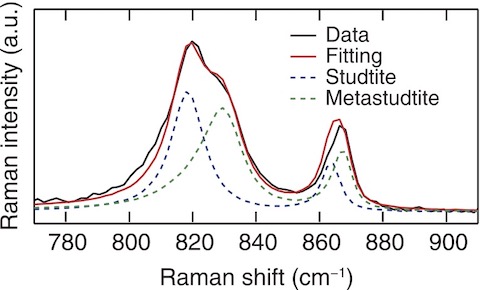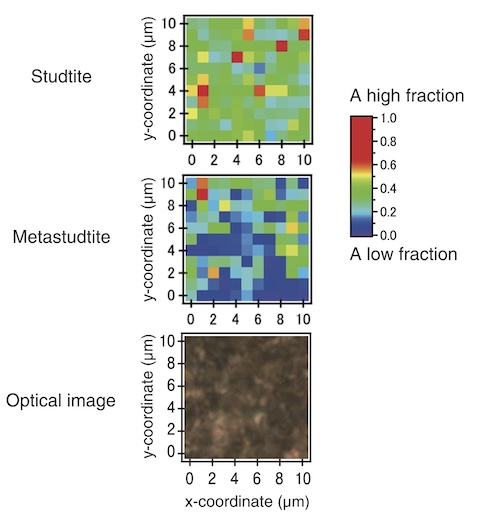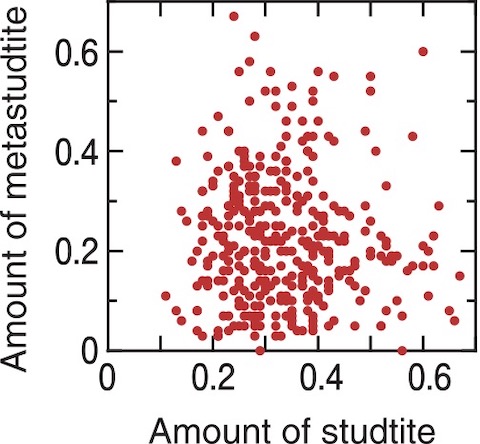
Fig.4-6 Raman spectra of U3O8 immersed in a hydrogen peroxide solution

Fig.4-7 Distribution of uranyl peroxides generated on the surface of U3O8 and an optical microscope image

Fig.4-8 Scatter plot showing the amount of generated studtite (x-axis) and metastudtite (y-axis)
Nuclear fuel debris at TEPCO's Fukushima Daiichi NPS is considered an uncertain, complex, solid mixture generated from the melting and cooling of nuclear fuel, zircaloy cladding, structural materials, etc. Detailed knowledge of the chemical state of the debris, such as the chemical substances comprising the fuel debris, is necessary for safe and effective decommissioning processes, including removal from the reactor, storage, processing, and disposal. However, clarification methods for the chemical states of the fuel debris have not been well established.
Therefore, we proposed a method using micro-Raman spectroscopy to clarify the chemical states of fuel debris. During micro-Raman spectroscopy, a sample is irradiated with a laser through an objective lens; information regarding the vibrational structure of the sample is obtained by detecting the scattered light. This method does not require sample pretreatment and can be performed on small samples and thus can be used to examine radioactive fuel debris safely and easily.
Since the fuel debris is in contact with water in the reactor, it is expected to react with the hydrogen peroxide generated by the radiolysis of water and be in a chemical state different from that immediately following the accident. Therefore, the aging reaction of U3O8, which is one of the fundamental uranium oxides, by hydrogen peroxide was investigated.
The performed measurements clarified that two types of uranyl peroxides (studtite and metastudtite) with different hydration numbers were observed on the surface of U3O8 by the reaction with hydrogen peroxide (Fig.4-6). The distribution of the products on the sample surface indicates that more studtite was formed (Fig.4-7). No correlation was observed between the amount of studtite and metastudtite generated (Fig.4-8), suggesting that these two types of uranyl peroxides were generated independently.
Uranyl peroxide is also known to be generated by the oxidation reaction of spent nuclear fuel and UO2. Recently, it has been found that uranyl peroxides are also generated by the oxidation reaction of simulated debris of uranium-stainless steel-zirconium system, which is closer to the actual fuel debris. Therefore, as uranyl peroxides may be generated in actual fuel debris, analyzing uranyl peroxides will provide information on the aging of fuel debris. Furthermore, since micro-Raman spectroscopy can be used to analyze compounds other than uranyl peroxides, the proposed methodology could contribute to the accurate understanding of the chemical properties of fuel debris.
This work was supported by JAEA Nuclear Energy S&T and Human Resource Development Project (No.JPJA18P18071886).
(Ryoji Kusaka)